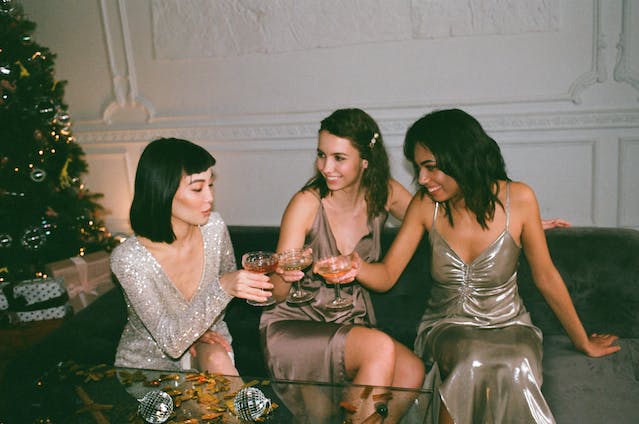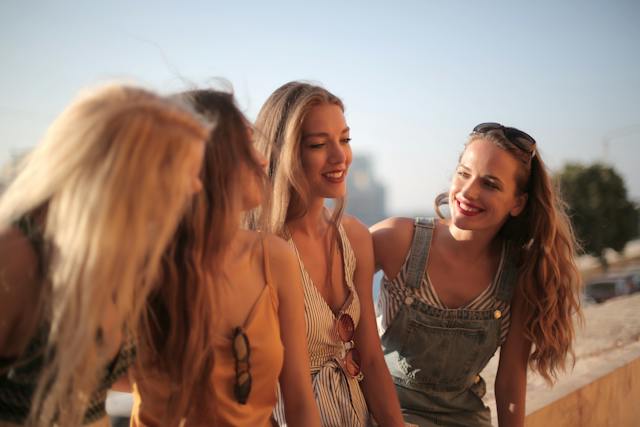Over the years, rave clothes have evolved the same as the music itself. The EDM movement was always about expressing yourself vibrantly, from the early 90s underground events to becoming a global phenomenon. It wasn’t always light-up tees and daisies, but electronic music and a vibrant personal style are inextricably linked. So, in honor of the raver who came before us, here’s a rundown of what rave-style clothing entails.
The Late 1980s and Early 1990s
Electronic dance music has found its way from the sunny islands of Ibiza to grungy undergrounds worldwide in the closing years of the 1980s. Overalls, boiler suits, and phat pants became more popular as the general rave attire evolved from designer outfits to something a little more industrial.
The style was oversized and functional with a hippy twist, something you could wear without losing your chapstick or keys in a humid warehouse. Although the clothing fit was very different from what we see today, colorful embellishments like beads and whistles were just as significant in spicing up a fit. The yellow smiley-face tee that became an iconic symbol for this age of electronic music fans was a must-have piece of clothing back then.
Essential Rave Outfit
A smiling face tee, a colorful bucket hat, large jeans (with lots of pockets), a whistle on a chain, and sneakers were all required.
The Music
The music that accompanied this craze was the acid house. This was not just the most popular electronic genre during parties in NYC and anywhere else, but it also permeated popular culture and impacted mainstream music.
Acid house fashion eventually made its way onto the runway and even inspired street fashion. Established underground brands like Freshjive and Stussy exchanged inspirations with the movement and evolved into unofficial rave apparel companies.
The Mid to Late 1990s
As the internet era arrived, rave clothing began to reflect this, emphasizing cyber fashion. Elmo and Mickey Mouse plushes became a must-have late-night accessory, and the aesthetic got more vivid and lively. It was an overblown caricature of 90s culture, like Guy Fieri or the Spice Girls plugged into a dial-up modem.
The outfits became more colorful as the millennium neared, but popular labels like Adidas also influenced them. Spiked hair, visors, and overall athletic attire became the norm.
This was the era when loose-fitting functionality and exuberance coexisted. As more ears and eyes began to notice this homegrown style, this phase in rave fashion was about expressing kidhood and embracing the developing environment.
It’s worth noting that the United Kingdom was going through its huge fashion revolution at the time. Underground parties and raves were rendered illegal in 1994, forcing nightlife to return to clubs with dress rules. Due to this, cocktail dresses resurfaced as the wild aesthetic of the warehouse era faded away.
Essential Rave Outfit
Colored gel hair, a glow stick, a visor, a furry backpack, Mickey Mouse keychain plushes, and Adidas shell toes were all the essentials. Unless you were over the pond, in which case it was back to after-work clothing and short dresses.
The Music
Electronic music was beginning to take on a more anthem-oriented approach, and prominent outlets’ ears perked up, even though it was still in its early stages. Fatboy Slim, The Crystal Method, and The Prodigy were among the first to raise the bar on what these tunes could achieve. Raves grew in size, music became more diversified and aggressive, and everything associated with them, including rave clothing, followed pace.
Millennium Years
As massive entered the commercial arena, the more casual form of rave-outfits began to slip away.
The solicitations were targeted as more commercial events popped up on the party circuit in big towns in Southern California. With such large crowds at these large festivals, fashion was undoubtedly a setting where friends appealed to each other.
This was the era of the Kandi kids, who wore their colorful beads on custom armbands, facemasks, bracelets, and everything else they could get their hands on. This was also a moment for electronic music enthusiasts to express themselves through symbols and brief messages that they could send to one another.
This style is still going strong as the most obvious fashion statement on the circuit today. Gloves for activity and LED wear are still used today.
Essential Rave Outfit
Kandi, Light Up Fur Hood, Splatter Alien Bandana, and Furry Party Animal Goggles are among the essentials.
The Music
Electro and large room were the most popular genres in the electronic dance music industry from 2010 and 2014. Most electronic music enthusiasts were familiar with Martin Garrix’s “Animals” and Benny Benassi’s “Satisfaction.”
Blog house, French electro, and dubstep all surge onto a global scale in a short period toward the end of this era. The electronic world was rocked by Skrillex’s “Scary Monsters and Nice Sprites” and Flux Pavilion’s “I Can’t Stop.”
Present
Different forms of clothes based on sub-genres of rave culture are now available. Learn more about different fashion styles from online clothing stores. There’s no denying that rave fashion has progressed, yet there are still vestiges of earlier decades.
People seek ways to express themselves, and one of the simplest ways is via clothing. Darker colors can be seen on dubstep fans, while you can find LED or fluffy tops on others.
Since raves have become so popular, you can find almost anything at a festival, so there’s no need to fret about what the rest will wear. The main goal is to feel good and have a good time, so try to pick something that will assist you in relaxing and enjoying the event.
You Don’t Wear Your Regular Party Clothes to a Rave Party
When most people think of rave parties, they imagine something new with electronic music, DJs, and brilliant colors, but the reality is a little different. Rave parties, it turns out, began in the 1950s. It was a term that describes wild bohemian parties held in Soho, London, by the beatnik set.
Mick Mulligan, a jazz musician, was the first King of Rave, and the tradition continued through the decades. During the 1960s, the term “rave” came to signify any celebration. Rave referred to psychedelic bands such as The Yardbirds and, later, Paul McCartney.
Even though the music at rave parties varied dramatically, a few elements stayed constant. Clothing is one of them. It’s a basic rule that you don’t wear your regular party clothing to a rave party.
In the 1980s, rave fashion became fairly popular, and each decade had something fresh and unique to offer. Fashion trends became a global rule for some elements, while others varied from place to place.


